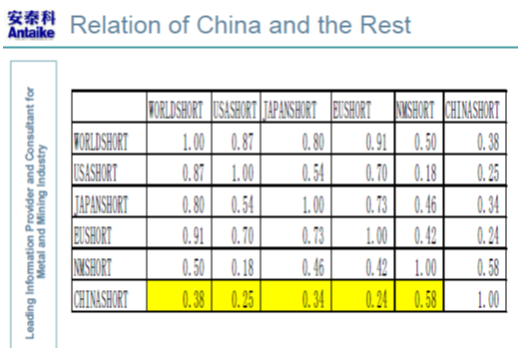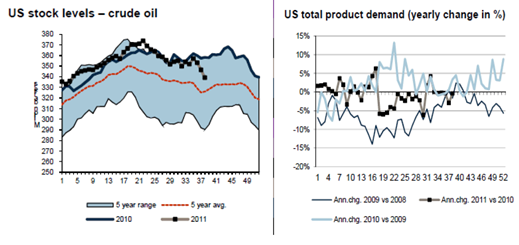Analys
SHB Råvarubrevet 23 september 2011
 Det har återigen varit en turbulent vecka med kraftiga fall på såväl aktie- som råvarumarknaderna efter förnyad oro kring den ekonomiska tillväxten. Vårt Råvaruindex är nu ned (-0.5 procent) för första gången i år. Federal Reserves beskrivning av läget som ”signifikanta nedåtrisker mot de ekonomiska utsikterna” tillsammans med svaghetstecken i preliminära inköpsindex från både Kina och Euroområdet har pressat framför allt de konjunkturkänsliga råvarorna som olja och basmetaller. Procentuellt sett har nedgången på olja, ca 7 procent, inte varit lika stor som på basmetallerna där bla nickel och koppar fallit med hela 15 procent. Det är helt riskaptiten som styr prisutvecklingen. Osäkerheten har bitit sig fast och vi räknar med fortsatt kraftiga kursrörelser där förhoppningarna i allt större utsträckning ställs till bolagen och verkliga förbrukningssiffror. Marknaden handlas mot slutet av veckan kvar på låga nivåer utan någon egentligen rekyl. Att marknaderna faller trots G20 uttalanden tyder på att det underliggande är mycket svagt och det känns som om en eventuell rekyl kan komma att dröja, speciellt eftersom även dollarn stärkts och verkar negativt för prisbilden. På måndag kommer dessutom viktig europeisk statistik när det tyska Ifo-institutet presenterar sina siffror över stämningsläget i ekonomin vilket med största sannolikhet kommer att påverka råvarumarknaderna endera hållet. Intressant att se om IMF mötet i helgen kan ge något stöd.
Det har återigen varit en turbulent vecka med kraftiga fall på såväl aktie- som råvarumarknaderna efter förnyad oro kring den ekonomiska tillväxten. Vårt Råvaruindex är nu ned (-0.5 procent) för första gången i år. Federal Reserves beskrivning av läget som ”signifikanta nedåtrisker mot de ekonomiska utsikterna” tillsammans med svaghetstecken i preliminära inköpsindex från både Kina och Euroområdet har pressat framför allt de konjunkturkänsliga råvarorna som olja och basmetaller. Procentuellt sett har nedgången på olja, ca 7 procent, inte varit lika stor som på basmetallerna där bla nickel och koppar fallit med hela 15 procent. Det är helt riskaptiten som styr prisutvecklingen. Osäkerheten har bitit sig fast och vi räknar med fortsatt kraftiga kursrörelser där förhoppningarna i allt större utsträckning ställs till bolagen och verkliga förbrukningssiffror. Marknaden handlas mot slutet av veckan kvar på låga nivåer utan någon egentligen rekyl. Att marknaderna faller trots G20 uttalanden tyder på att det underliggande är mycket svagt och det känns som om en eventuell rekyl kan komma att dröja, speciellt eftersom även dollarn stärkts och verkar negativt för prisbilden. På måndag kommer dessutom viktig europeisk statistik när det tyska Ifo-institutet presenterar sina siffror över stämningsläget i ekonomin vilket med största sannolikhet kommer att påverka råvarumarknaderna endera hållet. Intressant att se om IMF mötet i helgen kan ge något stöd.
Vid China Metal Forum som hölls i veckan gav kinesiska analyshuset Antaike sin syn på metallmarknaden och de ser för närvarande ingen direkt försvagning i Kinesiska förbrukningssiffror. Inte heller några tecken på överkapacitet inom stålindustrin där man för närvarande har ett rekordhögt kapacitetsutnyttjande om närmare 715 miljoner ton årlig produktion. De visade också en ganska intressant bild över korrelationen mellan Kina och övriga världen där Kina i ganska liten grad påverkas av den globala utvecklingen, se nedan.
Handelsbankens Råvaruindex
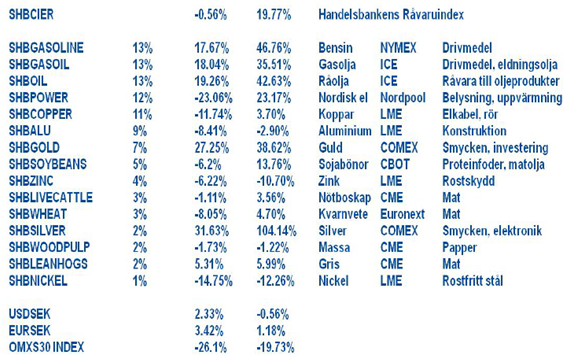
Handelsbankens råvaruindex består av de underliggande indexen för respektive råvara. Vikterna är bestämda till hälften från värdet av global produktion och till hälften från likviditeten i terminskontrakten.
Olja
Brentoljan har fallit med närmare 7 procent under veckan till lite drygt 105 dollar per fat. Det är den lägsta nivån sedan början av augusti. Lagernivåerna kom in långt under förväntan, råoljelagren föll hela 7.3 miljoner fat mot 0.3 miljoner fat väntat, och har därmed fallit 18 miljoner fat de senaste tre veckorna, se nedan. Denna veckans siffra kan delvis förklaras av ett högre kapacitetsutnyttjande, 86.3procent mot 84.7 procent förra veckan. Samtidigt var importen något lägre, 8.35 miljoner fat/dag mot tidigare 8.54 miljoner fat/dag.
Guld
Guldet har fallit närmare 7 procent under veckan vilken är den största rörelsen sedan 20008. Guldet handlas under 1700 dollar mot slutet av veckan vilket är den lägsta nivån på över 6 veckor. VI varnade förra veckan för fallande pris på guld eftersom marknaden blivit ordentligt utsträckt på uppsidan under augusti och september. Det som dessutom hänt denna vecka är att guldet dragits med ned i det allmänna råvaruraset eftersom man också sålt guld för att täcka förluster på andra tillgångar. Vi anser fortfarande att guld har en given plats i den långsiktiga sparportföljen, men just nu är det svårt att motivera Guld som tillflyktsort eftersom vi är inne i en djup korrigering. Vi tror därför att hösten kommer att bjuda på bättre tillfällen att komma in i marknaden.
El
Inga större rörelser på elmarknaden under veckan där första kvartalet stärktes med strax över en procent. Samtidigt som fallet på fossila bränslen tynger sentimentet verkade väderomslaget mot en något torrare period för uppsidan. Det är fortsatt rejält blött under inledningen av nästa vecka men sen ser det ut som vi får en högtrycksetablering. Det finns dock risk för att högtrycket viker söderut och lågtrycken får fäste igen vilket bör fortsätta att pressa marknaden. Vidare har vi också fortsatt låga spotpriser i Norden så sentimentet känns svagt om något.
Vete
Terminspriser på vete har backat under den gångna veckan, påverkat framförallt av en bred nedgång på de finansiella marknaderna. Fortsatt låg efterfrågan på amerikanskt vete har även det fortsatt att pressa ned priserna. Egypten köpte i veckan 240.000 ton vete från Ryssland, vilket ytterligare bekräftade Rysslands dominans på exportmarknaden. Ryska priserna är fortfarande klart lägre än både franska och amerikanska, konkurrensen väntas dessutom öka från Ukraina, Kazakstan och till viss del även Indien och Pakistan. Vädret utvecklas väl i Australien och en liten mängd har lindrat torkan i Argentina – men mer regn behövs. Kazakstan har varit blött för skörd men torrare väder väntas. Det är fortfarande för torrt för sådd av höstvete i stora delar av USA, med endast väldigt begränsad nederbörd. Torrt väder hämmar höstsådden även i Ukraina, väderprognoser lovar ingen större förändring under de närmaste två veckorna. Fokus under veckan har dock inte varit på fundamentala faktorer.
Majs
Majsen har tappat kraftigt i pris under veckan, till stor del på grund av allmänt fallande råvarupriser. Inga större nyheter har kommit som kan ge stöd åt priserna. Rykten om att Kina visat intresse för köp av uppemot 5 miljoner ton majs av amerikanskt eller argentinskt ursprung har ännu ej bekräftats. Faktum kvarstår dock att lagernivåer är låga, både i USA och globalt sett, vilket bör begränsa en fortsatt nedgång. Samtidigt är efterfrågan låg och osäkerheten fortsatt stor angående nivån på den amerikanska skörden – en del rapporter pekar på skördar över förväntan och andra tvärtom, vilket gör situationen svårbedömd.
[box]SHB Råvarubrevet är producerat av Handelsbanken och publiceras i samarbete och med tillstånd på Råvarumarknaden.se[/box]
Ansvarsbegränsning
Detta material är producerat av Svenska Handelsbanken AB (publ) i fortsättningen kallad Handelsbanken. De som arbetar med innehållet är inte analytiker och materialet är inte oberoende investeringsanalys. Innehållet är uteslutande avsett för kunder i Sverige. Syftet är att ge en allmän information till Handelsbankens kunder och utgör inte ett personligt investeringsråd eller en personlig rekommendation. Informationen ska inte ensamt utgöra underlag för investeringsbeslut. Kunder bör inhämta råd från sina rådgivare och basera sina investeringsbeslut utifrån egen erfarenhet.
Informationen i materialet kan ändras och också avvika från de åsikter som uttrycks i oberoende investeringsanalyser från Handelsbanken. Informationen grundar sig på allmänt tillgänglig information och är hämtad från källor som bedöms som tillförlitliga, men riktigheten kan inte garanteras och informationen kan vara ofullständig eller nedkortad. Ingen del av förslaget får reproduceras eller distribueras till någon annan person utan att Handelsbanken dessförinnan lämnat sitt skriftliga medgivande. Handelsbanken ansvarar inte för att materialet används på ett sätt som strider mot förbudet mot vidarebefordran eller offentliggörs i strid med bankens regler.
Finansiellt instruments historiska avkastning är inte en garanti för framtida avkastning. Värdet på finansiella instrument kan både öka och minska och det är inte säkert att du får tillbaka hela det investerade kapitalet.
Analys
Crude stocks fall again – diesel tightness persists

U.S. commercial crude inventories posted another draw last week, falling by 2.4 million barrels to 418.3 million barrels, according to the latest DOE report. Inventories are now 6% below the five-year seasonal average, underlining a persistently tight supply picture as we move into the post-peak demand season.

While the draw was smaller than last week’s 6 million barrel decline, the trend remains consistent with seasonal patterns. Current inventories are still well below the 2015–2022 average of around 449 million barrels.
Gasoline inventories dropped by 1.2 million barrels and are now close to the five-year average. The breakdown showed a modest increase in finished gasoline offset by a decline in blending components – hinting at steady end-user demand.
Diesel inventories saw yet another sharp move, falling by 1.8 million barrels. Stocks are now 15% below the five-year average, pointing to sustained tightness in middle distillates. In fact, diesel remains the most undersupplied segment, with current inventory levels at the very low end of the historical range (see page 3 attached).
Total commercial petroleum inventories – including crude and products but excluding the SPR – fell by 4.4 million barrels on the week, bringing total inventories to approximately 1,259 million barrels. Despite rising refinery utilization at 94.6%, the broader inventory complex remains structurally tight.
On the demand side, the DOE’s ‘products supplied’ metric – a proxy for implied consumption – stayed strong. Total product demand averaged 21.2 million barrels per day over the last four weeks, up 2.5% YoY. Diesel and jet fuel were the standouts, up 7.7% and 1.7%, respectively, while gasoline demand softened slightly, down 1.1% YoY. The figures reflect a still-solid late-summer demand environment, particularly in industrial and freight-related sectors.


Analys
Increasing risk that OPEC+ will unwind the last 1.65 mb/d of cuts when they meet on 7 September

Pushed higher by falling US inventories and positive Jackson Hall signals. Brent crude traded up 2.9% last week to a close of $67.73/b. It traded between $65.3/b and $68.0/b with the low early in the week and the high on Friday. US oil inventory draws together with positive signals from Powel at Jackson Hall signaling that rate cuts are highly likely helped to drive both oil and equities higher.

Ticking higher for a fourth day in a row. Bank holiday in the UK calls for muted European session. Brent crude is inching 0.2% higher this morning to $67.9/b which if it holds will be the fourth trading day in a row with gains. Price action in the European session will likely be quite muted due to bank holiday in the UK today.
OPEC+ is lifting production but we keep waiting for the surplus to show up. The rapid unwinding of voluntary cuts by OPEC+ has placed the market in a waiting position. Waiting for the surplus to emerge and materialize. Waiting for OECD stocks to rise rapidly and visibly. Waiting for US crude and product stocks to rise. Waiting for crude oil forward curves to bend into proper contango. Waiting for increasing supply of medium sour crude from OPEC+ to push sour cracks lower and to push Mid-East sour crudes to increasing discounts to light sweet Brent crude. In anticipation of this the market has traded Brent and WTI crude benchmarks up to $10/b lower than what solely looking at present OECD inventories, US inventories and front-end backwardation would have warranted.
Quite a few pockets of strength. Dubai sour crude is trading at a premium to Brent crude! The front-end of the crude oil curves are still in backwardation. High sulfur fuel oil in ARA has weakened from parity with Brent crude in May, but is still only trading at a discount of $5.6/b to Brent versus a more normal discount of $10/b. ARA middle distillates are trading at a premium of $25/b versus Brent crude versus a more normal $15-20/b. US crude stocks are at the lowest seasonal level since 2018. And lastly, the Dubai sour crude marker is trading a premium to Brent crude (light sweet crude in Europe) as highlighted by Bloomberg this morning. Dubai is normally at a discount to Brent. With more medium sour crude from OPEC+ in general and the Middle East specifically, the widespread and natural expectation has been that Dubai should trade at an increasing discount to Brent. the opposite has happened. Dubai traded at a discount of $2.3/b to Brent in early June. Dubai has since then been on a steady strengthening path versus Brent crude and Dubai is today trading at a premium of $1.3/b. Quite unusual in general but especially so now that OPEC+ is supposed to produce more.
This makes the upcoming OPEC+ meeting on 7 September even more of a thrill. At stake is the next and last layer of 1.65 mb/d of voluntary cuts to unwind. The market described above shows pockets of strength blinking here and there. This clearly increases the chance that OPEC+ decides to unwind the remaining 1.65 mb/d of voluntary cuts when they meet on 7 September to discuss production in October. Though maybe they split it over two or three months of unwind. After that the group can start again with a clean slate and discuss OPEC+ wide cuts rather than voluntary cuts by a sub-group. That paves the way for OPEC+ wide cuts into Q1-26 where a large surplus is projected unless the group kicks in with cuts.
The Dubai medium sour crude oil marker usually trades at a discount to Brent crude. More oil from the Middle East as they unwind cuts should make that discount to Brent crude even more pronounced. Dubai has instead traded steadily stronger versus Brent since late May.
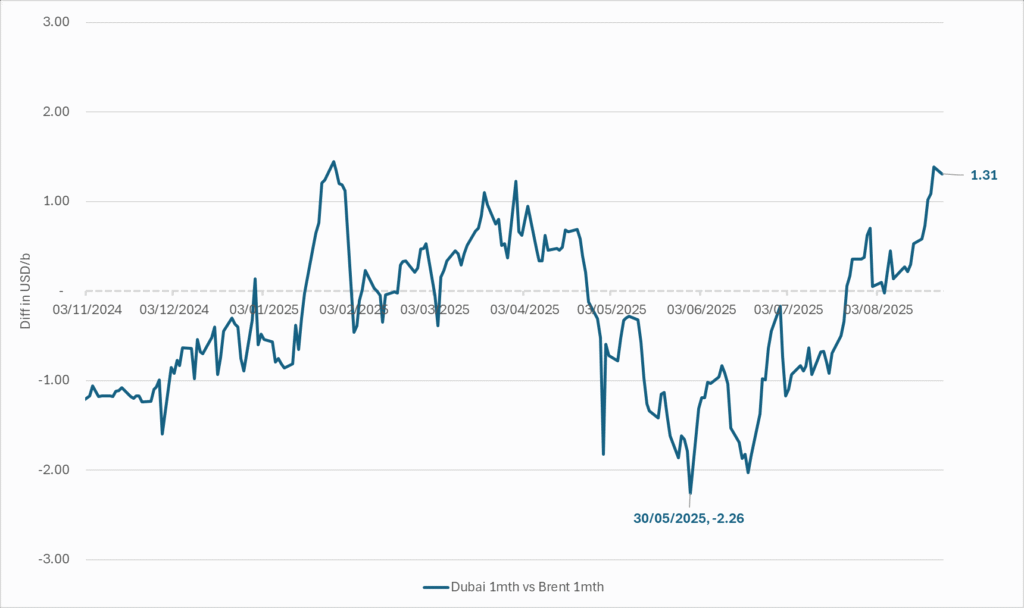
The Brent crude oil forward curve (latest in white) keeps stuck in backwardation at the front end of the curve. I.e. it is still a tight crude oil market at present. The smile-effect is the market anticipation of surplus down the road.
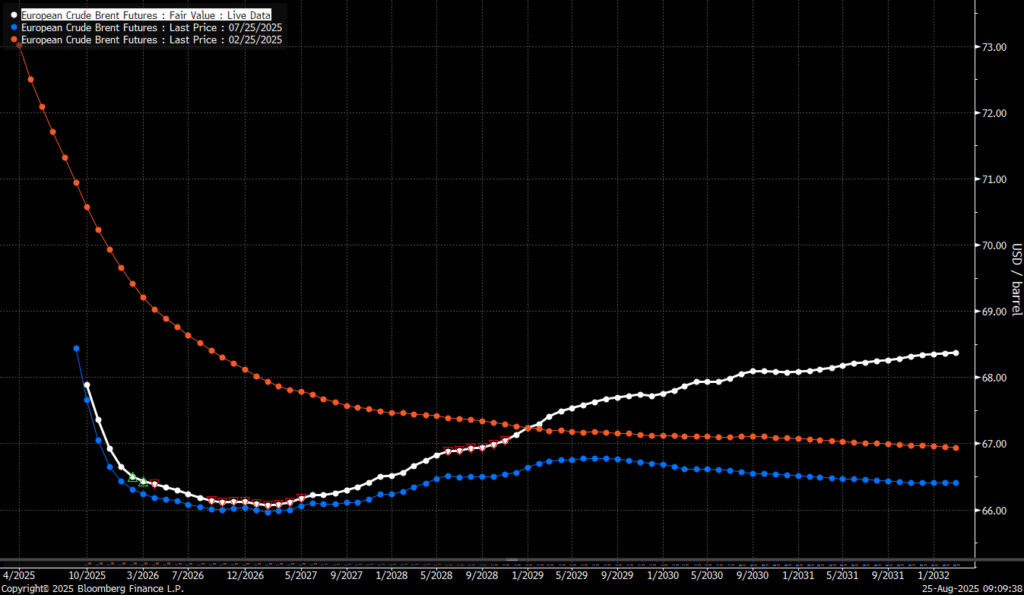
Analys
Brent edges higher as India–Russia oil trade draws U.S. ire and Powell takes the stage at Jackson Hole

Best price since early August. Brent crude gained 1.2% yesterday to settle at USD 67.67/b, the highest close since early August and the second day of gains. Prices traded to an intraday low of USD 66.74/b before closing up on the day. This morning Brent is ticking slightly higher at USD 67.76/b as the market steadies ahead of Fed Chair Jerome Powell’s Jackson Hole speech later today.

No Russia/Ukraine peace in sight and India getting heat from US over imports of Russian oil. Yesterday’s price action was driven by renewed geopolitical tension and steady underlying demand. Stalled ceasefire talks between Russia and Ukraine helped maintain a modest risk premium, while the spotlight turned to India’s continued imports of Russian crude. Trump sharply criticized New Delhi’s purchases, threatening higher tariffs and possible sanctions. His administration has already announced tariff hikes on Indian goods from 25% to 50% later this month. India has pushed back, defending its right to diversify crude sourcing and highlighting that it also buys oil from the U.S. Moscow meanwhile reaffirmed its commitment to supply India, deepening the impression that global energy flows are becoming increasingly politicized.
Holding steady this morning awaiting Powell’s address at Jackson Hall. This morning the main market focus is Powell’s address at Jackson Hole. It is set to be the key event for markets today, with traders parsing every word for signals on the Fed’s policy path. A September rate cut is still the base case but the odds have slipped from almost certainty earlier this month to around three-quarters. Sticky inflation data have tempered expectations, raising the stakes for Powell to strike the right balance between growth concerns and inflation risks. His tone will shape global risk sentiment into the weekend and will be closely watched for implications on the oil demand outlook.
For now, oil is holding steady with geopolitical frictions lending support and macro uncertainty keeping gains in check.
Oil market is starting to think and worry about next OPEC+ meeting on 7 September. While still a good two weeks to go, the next OPEC+ meeting on 7 September will be crucial for the oil market. After approving hefty production hikes in August and September, the question is now whether the group will also unwind the remaining 1.65 million bpd of voluntary cuts. Thereby completing the full phase-out of voluntary reductions well ahead of schedule. The decision will test OPEC+’s balancing act between volume-driven influence and price stability. The gathering on 7 September may give the clearest signal yet of whether the group will pause, pivot, or press ahead.
-

 Nyheter3 veckor sedan
Nyheter3 veckor sedanOmgående mångmiljardfiasko för Equinors satsning på Ørsted och vindkraft
-
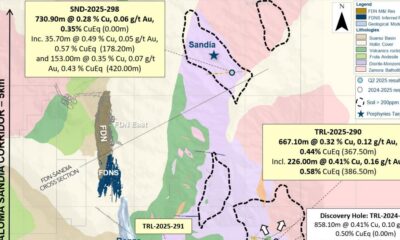
 Nyheter4 veckor sedan
Nyheter4 veckor sedanLundin Gold hittar ny koppar-guld-fyndighet vid Fruta del Norte-gruvan
-

 Nyheter1 vecka sedan
Nyheter1 vecka sedanMeta bygger ett AI-datacenter på 5 GW och 2,25 GW gaskraftverk
-

 Nyheter3 veckor sedan
Nyheter3 veckor sedanGuld stiger till över 3500 USD på osäkerhet i världen
-

 Analys3 veckor sedan
Analys3 veckor sedanWhat OPEC+ is doing, what it is saying and what we are hearing
-

 Nyheter4 veckor sedan
Nyheter4 veckor sedanAlkane Resources och Mandalay Resources har gått samman, aktör inom guld och antimon
-

 Nyheter1 vecka sedan
Nyheter1 vecka sedanAker BP gör ett av Norges största oljefynd på ett decennium, stärker resurserna i Yggdrasilområdet
-

 Nyheter3 veckor sedan
Nyheter3 veckor sedanLyten, tillverkare av litium-svavelbatterier, tar över Northvolts tillgångar i Sverige och Tyskland


